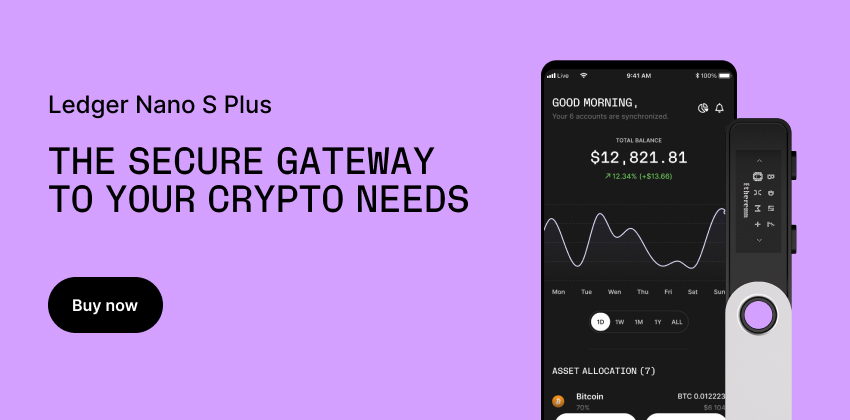- cryptoHC
- Posts
- Polkadot’s Quiet Momentum: Why This Layer-0 Is Still in the Game
Polkadot’s Quiet Momentum: Why This Layer-0 Is Still in the Game

You’re doing breakfast wrong
Let’s face it—most breakfast options just don’t cut it.
Toast? Too light. Cereal? Mostly sugar. Skipping it altogether? Not ideal.
If you want real fuel to power your day, it’s time to upgrade to Huel Black Edition. This ready-in-seconds shake is packed with 40g of plant-based protein, 27 essential vitamins & minerals, and 0 artificial sweeteners—just science-backed nutrition to support your muscles, digestion, and more.
Oh, and did we mention? It’s delicious.
Right now, first-time customers get 15% off, plus a free t-shirt and shaker with code HUELSPRING, for orders over $75.
Polkadot doesn’t chase headlines. It builds infrastructure. While other networks ride hype cycles, Polkadot keeps shipping. It’s one of the few blockchains solving real technical problems with a long-term plan.
Here’s what you need to know about where Polkadot is headed and why it still matters.
1. What Polkadot Is (and Isn’t)
Polkadot isn’t just another smart contract platform. It’s a Layer-0 protocol that connects many Layer-1 blockchains—called parachains—into a single, secure network.
Think of it as blockchain infrastructure for other blockchains. Developers use Substrate, Polkadot’s modular toolkit, to spin up custom blockchains with built-in governance, upgrades, and cross-chain messaging.
Founded by Ethereum co-founder Gavin Wood, Polkadot’s focus is engineering-first. That’s a strength—and a reason it’s often overlooked.
2. Polkadot 2.0: Faster Blocks, Flexible Space
Polkadot 2.0 is a major shift. It introduces two key upgrades:
Asynchronous Backing: Cuts block time from 12 seconds to 6. That means parachains process twice as many blocks, which improves throughput and lowers latency for apps.
Agile Coretime: Ditches the rigid slot auction model. Instead of locking projects into long leases, it lets them buy blockspace as needed. This lowers the barrier for small teams and short-term use cases.
These changes make the network faster, more scalable, and more open to experimentation.
3. JAM Protocol: What Comes Next
Polkadot is already planning its next architecture: the JAM (Join-Accumulate Machine) protocol. JAM adds modularity, privacy, and speed.
It supports multiple virtual machines. It separates consensus from execution. It’s designed to hit 1 million transactions per second. And it bakes in support for zero-knowledge proofs.
JAM is expected to replace the current relay chain in 2025, without breaking parachain compatibility.
4. Developer Community: Quietly One of the Largest
Polkadot often flies under the radar, but developer data tells a different story:
Over 700 monthly active devs, according to Electric Capital
More than 150 active GitHub repos, including major parachains like Astar and Moonbeam
10 cohorts of the Polkadot Blockchain Academy
This isn’t a ghost chain. It’s one of the top three ecosystems by active development.
5. Institutional Signals: ETF on the Horizon
Polkadot isn’t just attracting developers. Institutions are watching too.
21Shares filed for a Polkadot spot ETF with the SEC in January 2025
Nasdaq filed a listing rule change in March
If approved, this gives U.S. investors access to DOT without self-custody. It’s a key signal that Polkadot is becoming more relevant to mainstream finance.
6. Real-World Use: Beyond Crypto
Polkadot’s design makes it easy to build projects with real-world impact.
Some examples:
Centrifuge: Tokenizes invoices and real estate for DeFi use
Nodle: Uses smartphones to build a decentralized IoT network
Cardano x Polkadot: Midnight sidechain uses Substrate for privacy features
OriginTrail (NeuroWeb): Builds data verification tools to fight misinformation
CryptoAutos: Simplifies vehicle verification using blockchain
These aren’t hype projects. They show how Polkadot infrastructure supports practical use.
7. Ecosystem Growth: Funded and Federated
The Polkadot ecosystem is growing from the inside out.
Over 1,400 proposals funded by the Polkadot Treasury
OpenGov gives DOT holders a real say in upgrades and funding
Projects like KodaDot and Subsocial support NFTs and on-chain social content
Cross-chain tools like XCMP keep improving, allowing parachains to trade assets and data without friction.
8. Still Some Friction
Polkadot has real strengths, but also real challenges:
Low brand visibility compared to Ethereum or Solana
Steep learning curve for developers and users
Fragmented liquidity across parachains
These are problems worth solving. And solving them is already in motion.
9. What to Watch in 2025
The big themes for Polkadot in 2025:
Polkadot 2.0 rollout: Faster, more flexible blockspace
JAM protocol: Higher throughput, modular upgrades
ETF decision: Potential gateway for U.S. institutional money
Polkadot is building for the long term. It won’t win the narrative war today, but it’s laying the groundwork for what comes after the hype fades.
The technology is solid. The plan is in motion. And the developer activity proves people are paying attention—even if Twitter isn’t.
If you care about real infrastructure, Polkadot belongs on your radar



Reply